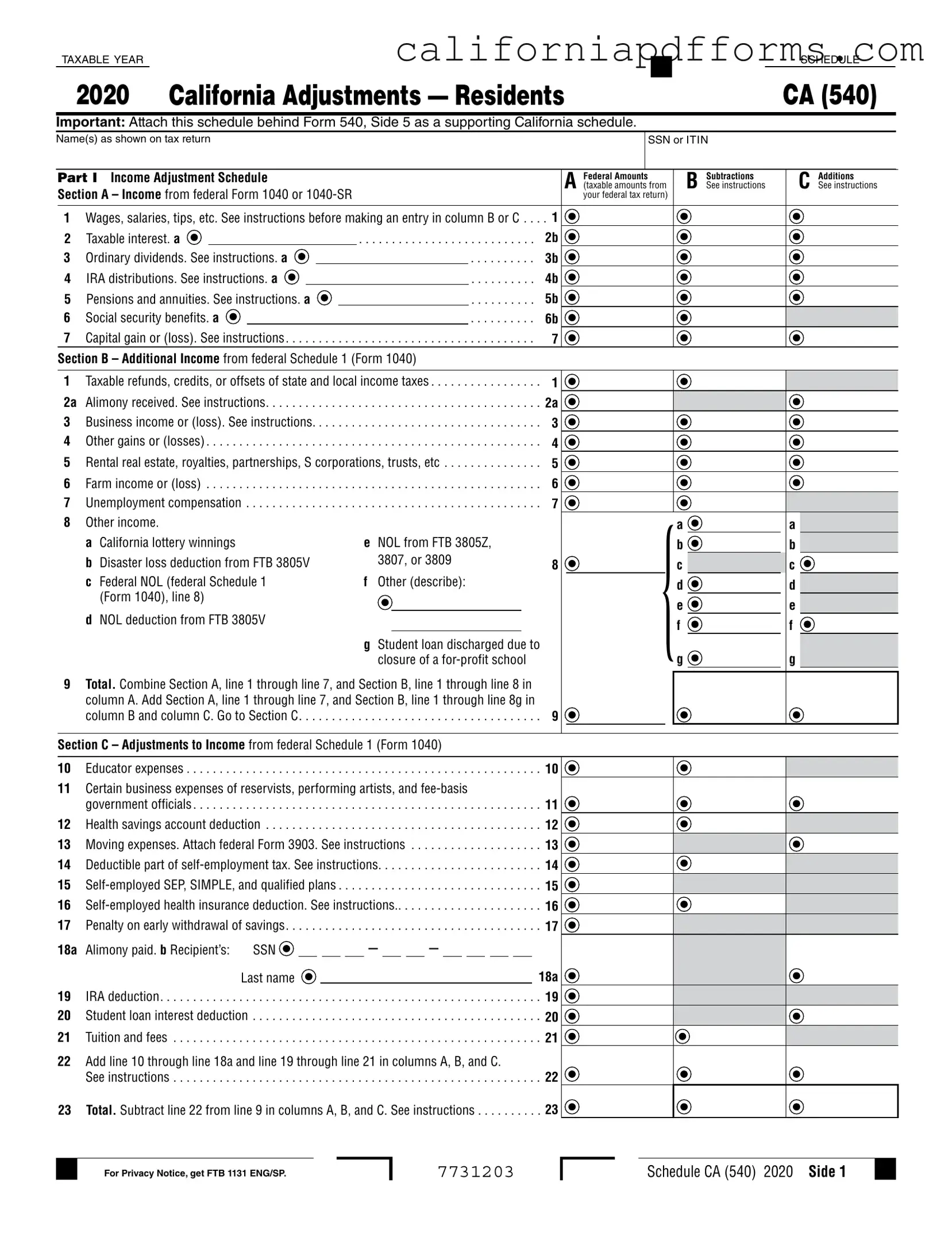Download Schedule California 540 Form
The Schedule California 540 form is a crucial document for California residents filing their state income taxes. It allows taxpayers to report adjustments to their income and deductions, ensuring compliance with state tax laws. For assistance in completing this form, click the button below to get started.
Open Your Form Online
